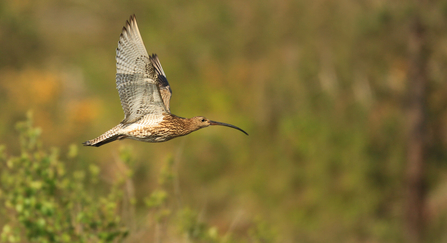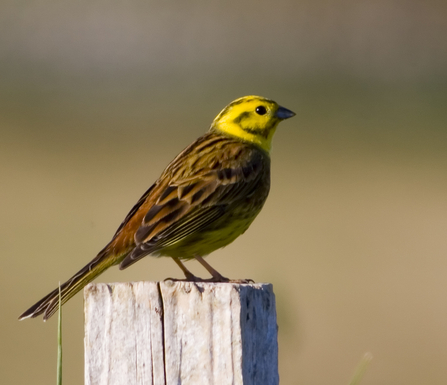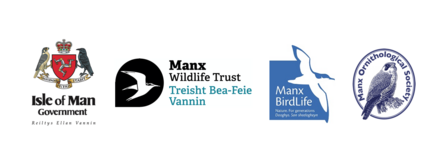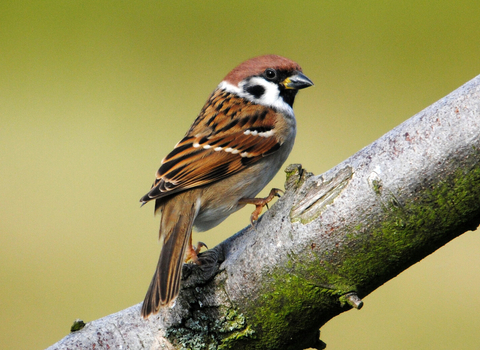The call of the Curlew is one of the most iconic sounds of the Manx uplands, yet this call is becoming less common with each passing year. The Curlew is Europe’s largest breeding wading bird and has historically had a healthy Manx population. This population is now in serious decline, not just here, but all over Britain and Europe. The Island can, and must, play a part in the global conservation of this threatened species.

Jon Hawkins - Surrey Hills Photography
Sadly, many other farmland birds are in decline too.
A recent review of all Manx bird species found that many farmland birds are at risk on the Isle of Man, including the iconic Lapwing and the diminutive Tree Sparrow. Both of these species were once widespread across Manx farmland but are now on the verge of extinction.
Farmland Bird Recovery is about combining urgent, targeted, local action with a longer-term, whole landscape and community approach, funded through the DEFA Agri-Environment Scheme.
Manx Wildlife Trust (MWT), Manx Ornithological Society (MOS) and Manx BirdLife (MBL) are supporting a new joint venture, Farmland Bird Recovery to work with Manx farmers to reverse the steep declines in many of our farmland birds.
Prioritisation
The three organisations concerned with bird conservation have determined, based on data going back to 1977, that 10 species of Manx farmland bird, all of which are already on the Manx ‘Red-list’ are in serious jeopardy. They are:
- Stock Dove
- Corncrake
- Lapwing
- Curlew
- Barn Owl
- Long-eared Owl
- Short-eared Owl
- Kestrel
- Tree Sparrow
- Twite
For two species, it may already be too late to stop the imminent loss of the remaining Manx breeding population. The remaining number of Tree Sparrow is unknown, but it is feared there may only be 10-20 pairs left. Lapwing are almost certain to be lost as a breeding in the next few years; there were only two breeding pairs left in 2022, which themselves failed to successfully raise any chicks owing to predation by a feral cat.
A Legacy of Losses
Several species of farmland bird have already been lost from our farmed Manx landscape. Historically, the Quail was lost in the nineteenth century and the Corn Bunting was lost in 1956. In addition, whilst very small numbers still visit in winter, Twite have not bred on the Island since the 1940s.
Cattle grazing at Grenaby. Three of these cows are White Park Cattle, a British rare breed!
In very recent times, the Grey Partridge was lost in 2014, and the Yellowhammer was probably lost around 2016.

Yellow hammer, a former breeder in the Isle of Man, now extinct here.
Credit-Damian Waters
The status of Corncrake is complicated. They were lost by around 1976, however re-established themselves from 1999 (first at MWT’s Close Sartfield Nature Reserve), and then bred on the Island every year until at least 2005. While no eggs or chicks seen since 2005, birds were heard in every year bar two until 2015, when the species was lost for a second time. Thankfully, single birds were heard on two different farms in 2022, giving glimmers of hope.
Towards Recovery
To reverse these declines, we have appointed a part-time Farmland Bird Officer to work closely with farmers to increase our understanding about the remaining population and distribution of the most threatened species. This role will involve implementing immediate conservation measures, and working with our Agri-Environment Officer to ensure farmers are receiving the best advice and the maximum financial support for their conservation efforts. In 2023 and 2024 our focus will be on Tree Sparrow and Lapwing, the most urgent priorities.
It is hoped, that should funding be secured, the Farmland Bird Officer position can be increased from one day a week to full-time to increase the number of target species and number of farms where conservation activity is undertaken.
Project partners


